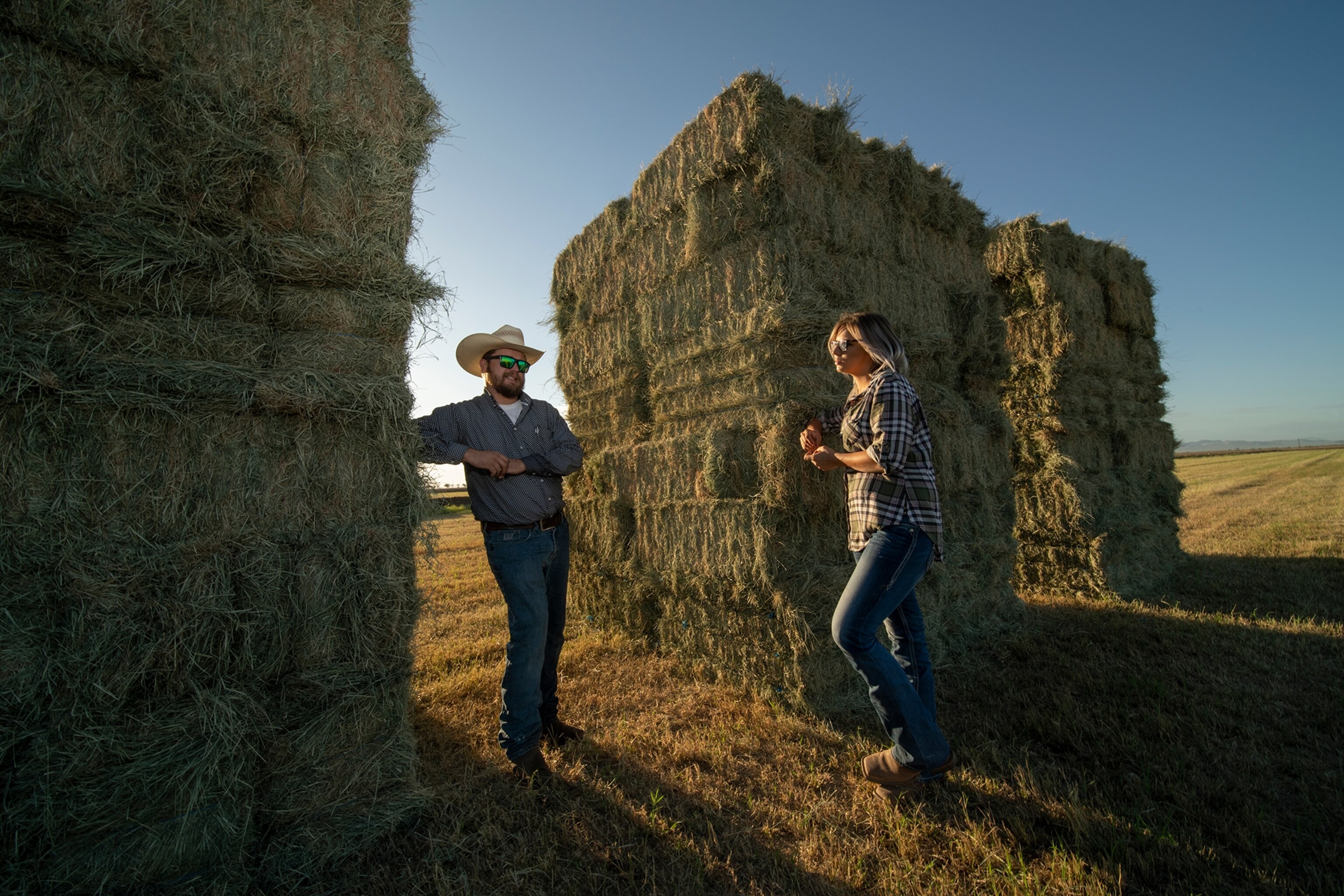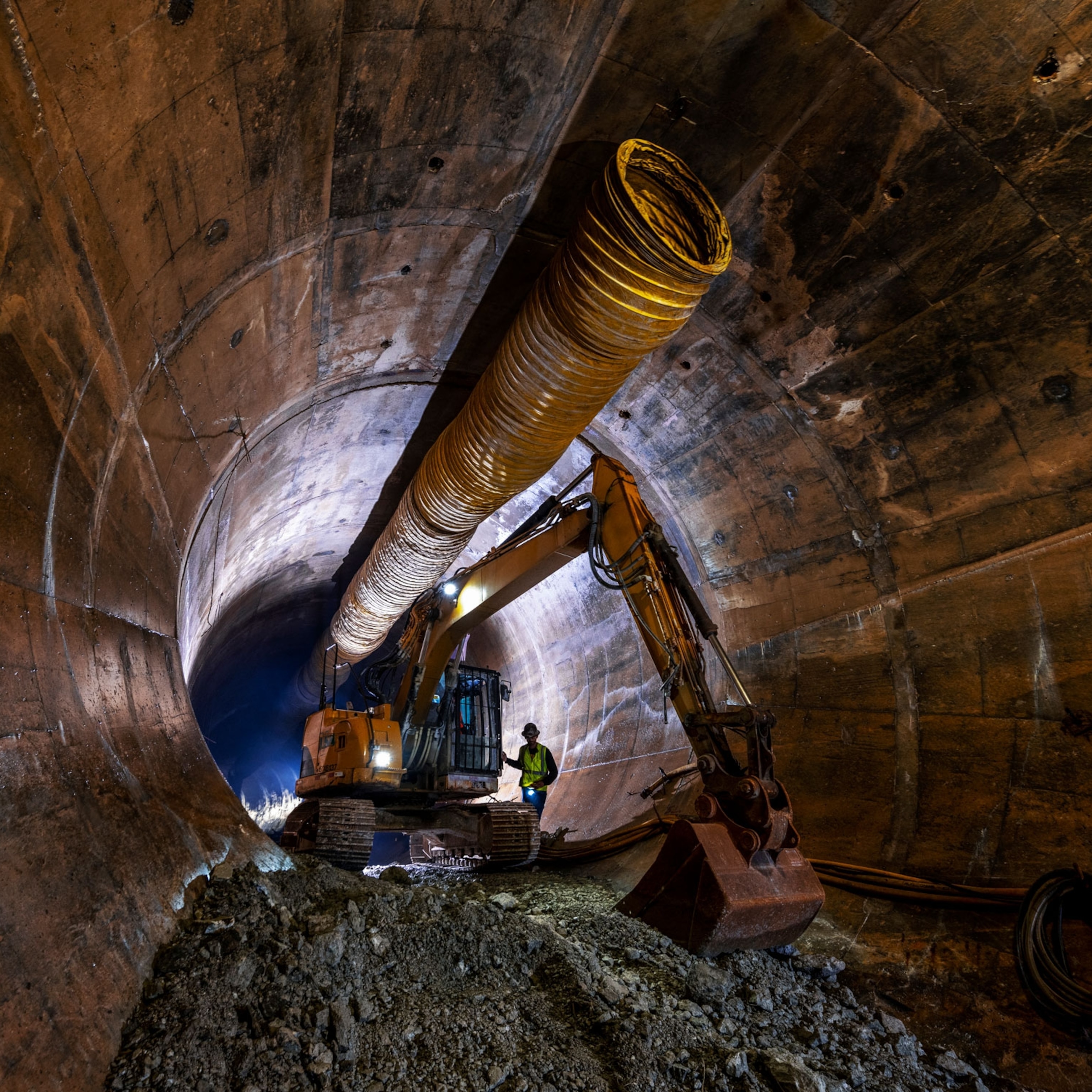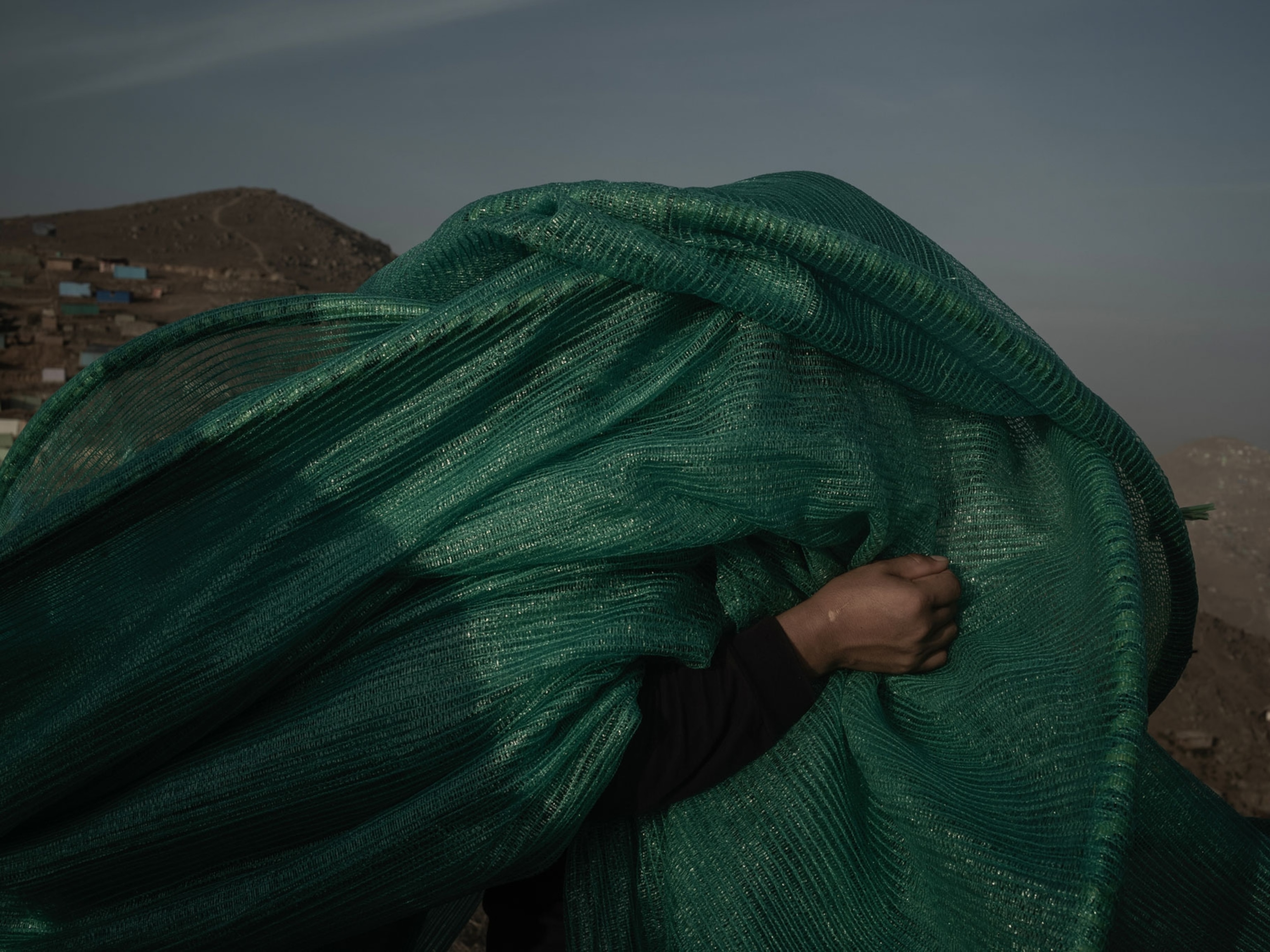You could almost visit Arizona without noticing it was a farming state. If you flew into Phoenix in an aisle seat, for instance, and spent your time in the city, you might not see it. But if you happened to drive south beyond the car shops and warehouses, across the sandy flats of mesquite and creosote, over dry arroyos, and past the groves of Saguaro cactus that really do stand like sentinels, you would eventually look up from the road to see fields of technicolor green. It may seem otherworldly after so many monochromatic miles, but irrigated agriculture has been a part of this desert landscape for more than 1,000 years.

Ancestors of today’s O’odham people devised complex systems of canals that made life tenable for generations. Long after they abandoned the Valley of the Sun for mysterious but not unimaginable reasons, European settlers picked up where they had left off. Jace Miller’s family showed up to homestead in 1919, and they’ve been around ever since.
At the age of 28, Miller is something of an oddity in a farming population that averages close to 60, even if he does sport the striped button-down shirt, blue jeans, Stetson and slight beer gut to match his elder peers. His father’s only son, he passed up a university scholarship to work the fields of cotton and hay his family leases. It’s also true that he prefers the lifestyle.
“The American farmer taught the world how to farm,” he said proudly in July as we blew past fields of flowering cotton in his Ford Super Duty pickup. “I want to carry on my family legacy, but, day to day, I don’t even know if I’m going to have a job.”
With midlife looming and a 100-year-old business to inherit, he’s facing the very real prospect of farming 1,700 acres of desert without water.
Lacking deep snow in the Rocky Mountains to feed it, the Colorado River—which supplies some 40 million people and 1.75 million acres of irrigated land—has dwindled. Its enormous reservoirs have drained to half-empty, and research suggests that climate change will contribute to a further 20 percent drop in streamflow by 2050.
Meanwhile, desert populations are booming, and there’s no talk of limiting growth. States that rely on the Colorado have seen some of the country’s highest growth rates for years. In 2018 Phoenix added more new residents than any other U.S. city. Facing scarcity, the state’s longstanding economic and political order is shifting, with water and power flowing from its agrarian past to its urban future.
Parceling out the river
This past March, with demand for water outpacing supply, representatives from two countries, seven states and 10 Native American communities finished years-long negotiations over how to reduce use. The resulting Drought Contingency Plan aims to maintain the water level of Lake Mead, outside Las Vegas, and avoid critical water shortages along the river system.
The plan was hailed by many as a successful example of burden sharing, but cuts had to come from somewhere. They came mostly from the more than 500 farmers like Miller who work this dusty swath of central Arizona and who will bear the brunt of the first mandatory water cuts in 2020. By virtue of being last in a long line of priority that determines who gets water, they now monitor the level in Lake Mead, waiting for the ax to fall.
Arizona produces beef, milk, melons, beans, corn, and greens for winter salads nationwide. But here in Pinal County the bread and butter is cotton and hay—thirsty crops that help make agriculture the state’s largest consumer of water.
“Farms use as much as 8 feet [of water] per acre per year,” says Leslie Meyers, manager of the Bureau of Reclamation’s Phoenix office. “Three homes might use 1 acre-foot.”
An acre-foot is 325,851 gallons, and Arizona is entitled to suck 2.8 million acre-feet of them from the Colorado River each year. Of that allotment, agriculture consumes about 70 percent.

To get to Miller’s farm, river water is pumped for more than 200 miles along the Central Arizona Project canal, a feat of 20th-century engineering and funding that, once much of the state’s groundwater had been sucked nearly dry by the 1980s, allowed desert communities to flourish. Now, the government keeps close tabs on groundwater withdrawals and manages its canal water with a priority system that favors cities and tribes over agriculture in times of shortage.
Farmers, ranchers, and dairymen may use more water than the cities, says Julie Murphree of the Arizona Farm Bureau, but they do so to produce food and fiber that the state consumes—even if many people don’t realize it. Pinal’s growers are part of a $23-billion industry in Arizona. They rank 39th among the nation’s counties in value of products sold, and account for about 40 percent of the state’s milk and 45 percent of its beef sales while supporting all the shops, distributors, and seasonal workers that rely on them.
Most farms here are family-run operations, a third of which work fewer than 10 acres. And between 2012 and 2017, average expenses for these families increased by 22 percent while incomes fell by nearly a third.
“Problem is every year our rent goes up and our [water] allocation goes down,” Miller says.
His irrigation district, which sets the price for and delivers water along the canal, now sends him about half the amount it takes to grow a crop of alfalfa. To survive, he and others are leaving as much as 40 percent of their land unfarmed. The belt tightening has ripple effects: With fewer crops to sell, farmers buy less seed and some forgo new equipment.
That’s one way to eke it out. Another is an age-old tactic with an all-too-familiar result. (Read about what will happen in the Midwest when the water runs out.)
Going underground
Out near Coolidge, in a clearing between unplanted fields, two sweat-soaked well drillers clamber to unclog a 1,000-foot-deep water well in oppressive heat. As their vintage rig coughs black smoke, a plug—a greasy amalgamation of mud, sand, and rust—spews from the depths and into the light.
With the end of river water in sight, irrigators are hurrying to repair or deepen their groundwater wells. Tommy Hoover, who owns this rig, says his company works on as many as 120 wells a year, mostly in Pinal County. He expects that to ramp up as long as his customers can afford the six-figure price tag. “Some just give up,” he says, sometimes after sinking all they had into a well.
In late 2018, with the drought agreement nearly finalized, irrigators in Pinal threatened to upend the entire process by demanding some $50 million in government funding to help with those costs.
“If somebody has a risk, you’ve got to give them the tools to manage that risk,” says Shane Lindstrom, who manages the San Carlos Irrigation and Drainage District. “This isn’t welfare, this is mitigation.”
Irrigators had known since 2004 that their river water allocation would be cut, when they signed on to a settlement to help the federal government reconcile longstanding water disputes with the Gila River Indian Community and the Tohono O’odham Nation. In exchange for their low-priority allocations, farmers were promised some canal water until 2030—depending on availability—and breaks on delivery taxes and fees that have already mounted to more than $300 million. Fifteen years later, drought has made earlier cuts necessary.
“You can imagine Pinal County wasn’t crazy about that,” Lindstrom says, noting that farm businesses had already planned years into the future.
As farmers are forced off the canal that saved them and back onto aquifers that their grandfathers helped bleed, there is intense concern over how long the groundwater will last. A study released in October predicted a 10 percent shortfall in the county over the next century, with aquifer levels dropping from today’s 200 feet belowground to 1,258 feet.
End of the line
Arizona’s students are taught about the five Cs: Copper, Cattle, Cotton, Citrus, and Climate, none of which escaped the 20th century unchanged. As industries like tech and construction have grown, agriculture now accounts for 8 percent of the state’s GDP, despite requiring three-quarters of its water. That agriculture is bearing the brunt of today’s water cuts is proof to some of a broader cultural shift.
“Farmers used to be the first ones in line. They were the driving force back in the day,” says Robert Kelm, who has dug agricultural and residential wells here since the 1980s. “Then they slowly lost their grip on things, and the cities started demanding more.”
“The whole dynamic has changed,” says the young Miller. “I’m fifth generation, and nowhere in my lifetime will I be able to buy my own land.”
In fact, the state never expected all these non-tribal farms to stay in business. The canal was constructed on the assurance that off-reservation agriculture would use the bulk of Central Arizona Project water at the outset, Meyers explains. Over time, though, the region was expected to transition from farms to the housing developments and business centers that now define Southwest living.
That ag-to-urban transfer is plain to see in the land-for-sale signs that are as common as cacti in Pinal County. Since the Great Recession, land values have climbed and development has sprawled. From 2012 to 2017, the number of farms here fell by more than six times the national rate of decline, according to the USDA.

Inside the air-conditioned office of a new housing project with the misleading name “Meadows,” a realtor explains that residents are mostly out-of-state retirees or new employees of the nearby prison. Asked if any have expressed concern about the area’s water, she replied: “I don’t get a lot of concern about water. Why, is it bad here?”
Ag innovation
In a fragrant orange grove west of Phoenix, another young farmer, Selwyn Justice, speaks fluidly about the history, geology, biology, climatology, and future of the Valley of the Sun. At 30, he runs the oldest continuously operated citrus farm in the state and intends to pass it along to his daughter.
“Our broad-scale climate conditions and our microclimate conditions are changing,” he says, “and they’re only going to get worse.” Despite a remarkably wet winter, drought has already returned to nearly all of Arizona. By 2100, due to human-caused climate change, the Southwest is expected to see 85 more days each year with temperatures over 100 degrees.
Working with the University of Arizona, Justice is looking for new technology—like irrigation systems that monitor and target dry patches in a field, and drought resistant crop varieties modified for high yield with little water—that will sustain farmers here.
“Anyone that’s really looking forward is trying to figure out what we can plant next to keep agriculture sustainable as an industry,” he says.
New crops like hemp, which has enormous potential yet remains mired in red tape, and guayule, a desert rubber plant that the Bridgestone tire company is developing, offer glimmers of hope. But their markets will have to be proven before most growers will abandon tried-and-true—and federally subsidized—cotton and hay.
In reality, Justice says, “There are some places in Arizona that inevitably are going to have to stop farming.”
Earlier this year, as the drought plan awaited a presidential signature, a group of regional water managers and planners gathered in a produce storehouse turned chic event space in Phoenix’s nostalgically named Warehouse District. Katheryn Sorenson, the city’s director of water services, explained with unfailing optimism how the desert would sustain its growth in the face of such dire environmental predictions.
“The future depends on moving water where it needs to go and away from where we don’t want it,” she said to a room with few farmers.
Where the water needs to go depends on who you talk to, but from a half-planted field in central Arizona, there’s no mistaking which way it’s flowing.
You May Also Like
Go Further
Animals
- Octopuses have a lot of secrets. Can you guess 8 of them?
- Animals
- Feature
Octopuses have a lot of secrets. Can you guess 8 of them? - This biologist and her rescue dog help protect bears in the AndesThis biologist and her rescue dog help protect bears in the Andes
- An octopus invited this writer into her tank—and her secret worldAn octopus invited this writer into her tank—and her secret world
- Peace-loving bonobos are more aggressive than we thoughtPeace-loving bonobos are more aggressive than we thought
Environment
- This ancient society tried to stop El Niño—with child sacrificeThis ancient society tried to stop El Niño—with child sacrifice
- U.S. plans to clean its drinking water. What does that mean?U.S. plans to clean its drinking water. What does that mean?
- Food systems: supporting the triangle of food security, Video Story
- Paid Content
Food systems: supporting the triangle of food security - Will we ever solve the mystery of the Mima mounds?Will we ever solve the mystery of the Mima mounds?
- Are synthetic diamonds really better for the planet?Are synthetic diamonds really better for the planet?
- This year's cherry blossom peak bloom was a warning signThis year's cherry blossom peak bloom was a warning sign
History & Culture
- Strange clues in a Maya temple reveal a fiery political dramaStrange clues in a Maya temple reveal a fiery political drama
- How technology is revealing secrets in these ancient scrollsHow technology is revealing secrets in these ancient scrolls
- Pilgrimages aren’t just spiritual anymore. They’re a workout.Pilgrimages aren’t just spiritual anymore. They’re a workout.
- This ancient society tried to stop El Niño—with child sacrificeThis ancient society tried to stop El Niño—with child sacrifice
- This ancient cure was just revived in a lab. Does it work?This ancient cure was just revived in a lab. Does it work?
- See how ancient Indigenous artists left their markSee how ancient Indigenous artists left their mark
Science
- Do you have an inner monologue? Here’s what it reveals about you.Do you have an inner monologue? Here’s what it reveals about you.
- Jupiter’s volcanic moon Io has been erupting for billions of yearsJupiter’s volcanic moon Io has been erupting for billions of years
- This 80-foot-long sea monster was the killer whale of its timeThis 80-foot-long sea monster was the killer whale of its time
- Every 80 years, this star appears in the sky—and it’s almost timeEvery 80 years, this star appears in the sky—and it’s almost time
- How do you create your own ‘Blue Zone’? Here are 6 tipsHow do you create your own ‘Blue Zone’? Here are 6 tips
Travel
- This town is the Alps' first European Capital of CultureThis town is the Alps' first European Capital of Culture
- This royal city lies in the shadow of Kuala LumpurThis royal city lies in the shadow of Kuala Lumpur
- This author tells the story of crypto-trading Mongolian nomadsThis author tells the story of crypto-trading Mongolian nomads
- Slow-roasted meats and fluffy dumplings in the Czech capitalSlow-roasted meats and fluffy dumplings in the Czech capital







